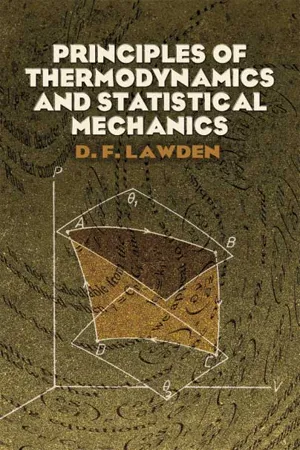
- 176 pages
- English
- ePUB (mobile friendly)
- Available on iOS & Android
Principles of Thermodynamics and Statistical Mechanics
About This Book
A thorough exploration of the universal principles of thermodynamics and statistical mechanics, this volume explains the applications of these essential rules to a multitude of situations arising in physics and engineering. It develops their use in a variety of circumstances—including those involving gases, crystals, and magnets—in order to illustrate general methods of analysis and to provide readers with all the necessary background to continue in greater depth with specific topics.
Author D. F. Lawden has considerable experience in teaching this subject to university students of varied abilities and backgrounds. Well acquainted with which concepts and arguments sometimes prove problematic, he presents the potentially difficult sections with particular care. Students can supplement their understanding by working through the numerous exercises which appear throughout the text. Mathematical physicists will find this volume of particular value, as will engineers requiring a basic but comprehensive introduction to the principles of thermodynamics and statistical mechanics.
Frequently asked questions
Information
CHAPTER 1
Classical thermodynamics
1.1 Thermodynamics and statistical mechanics
1.2 Thermodynamical equilibrium
Table of contents
- DOVER BOOKS ON PHYSICS
- Title Page
- Copyright Page
- Table of Contents
- Preface
- List of constants
- CHAPTER 1 - Classical thermodynamics
- CHAPTER 2 - Applications of classical theory
- CHAPTER 3 - Classical statistics. Maxwell’s distribution
- CHAPTER 4 - Method of mean values
- CHAPTER 5 - Quantum statistics
- CHAPTER 6 - Crystals and magnets
- CHAPTER 7 - Bose–Einstein and Fermi–Dirac statistics
- Appendices
- Bibliography
- Index